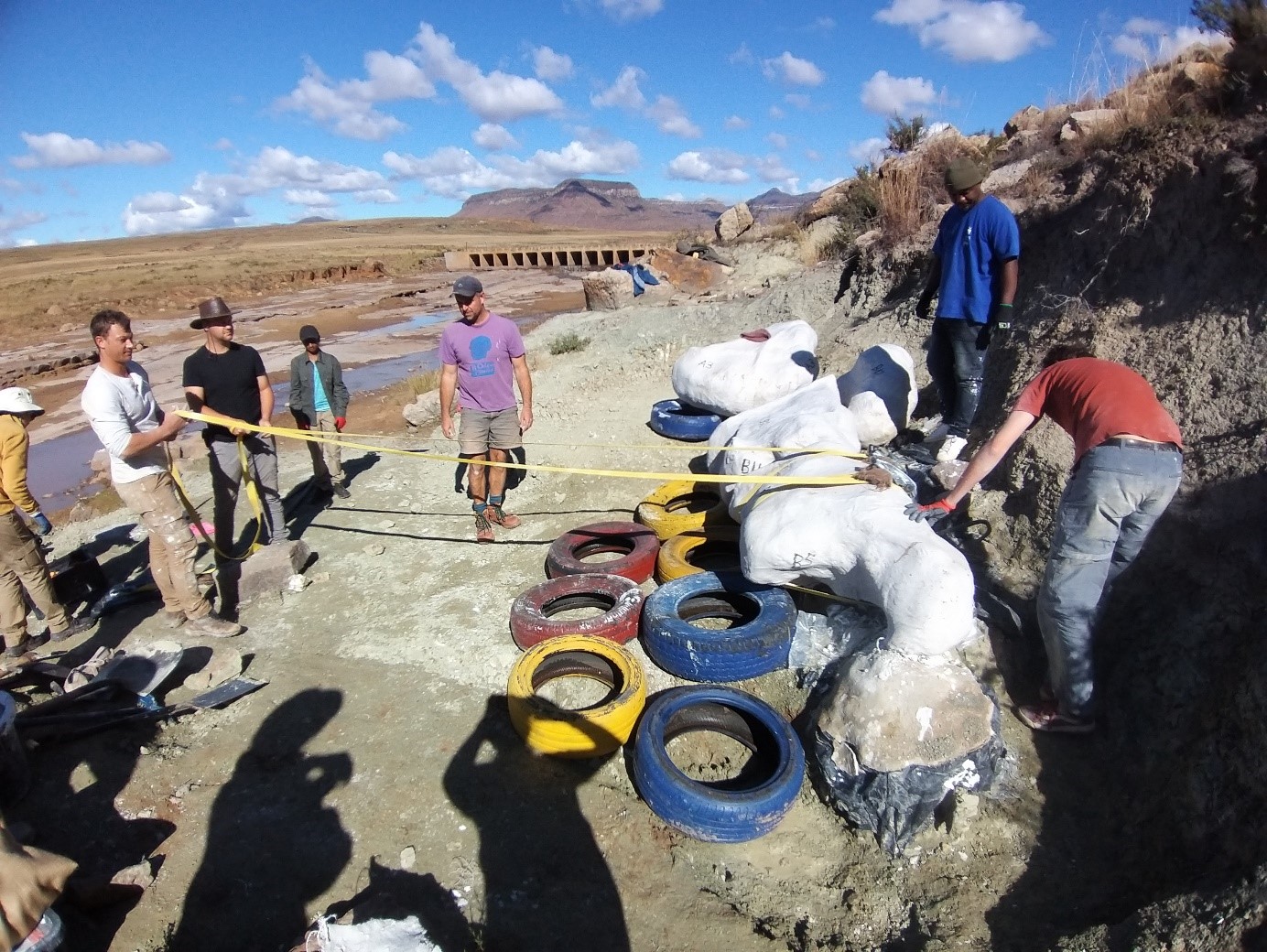- Home
- News
- General News
- Origins of slow...
Origins of slow growth on crocodiles
22-09-2023
Scientists led by the University of Witwatersrand (South Africa) have found that the ancestors of crocodiles began growing slowly during the Late Triassic and not the Early Jurassic, millions of years earlier than previously thought. Their results are published in Current Biology.
Today’s crocodilians (including crocodiles and alligators) all grow slowly, taking years to reach maximum size. In contrast, birds are crocodilian’s closest living relatives and they can reach adult size in less than a year (~150 days for a chicken!). When, how, and why crocodilians evolved to grow so slowly has eluded researchers for years. The new study sheds light on this question.
By investigating the internal structure of fossil bones of 200 million-year-old fossil crocodile ancestors (known as crocodylomorphs) from South Africa at the ESRF, a team of researchers has shown that they grew slowly, similar to their living descendants. Unlike today’s sprawling ambush predators, these early crocodylomorphs were active, fully terrestrial animals with upright limb postures.This research finding casts doubt on prevailing wisdom that slow growth in living crocodiles is linked to the evolution of their sedentary, semiaquatic lifestyles.
Kathleen Dollman, post-doctoral researcher at the ESRF and co-author of the publication, explains the importance of the research at the facility: “Early evolving crocodilians are extremely rare in the fossil record and classical histology requires destructive sampling of these fossils by cutting them. Being able to image these rare fossils at the ESRF allowed us to view internal bone microstructures in high resolution to study how these animals grew, without ever having to damage the fossil”. Study co-author Bailey Weiss, a PhD student at the University of the Witwatersrand’s Evolutionary Studies Institute, spent more than a month scanning fossils for this study at the ESRF under the supervision of Dollman. Experiments and student exchanges between Wits-ESI and the ESRF are funded in part by the South African National Research Foundation as part of a cooperative agreement.
.png) |
|
The team during the experiment on BM05. Credits: ESRF. |
The researchers also studied fossils of a gigantic new crocodilian ancestor that lived 210 million years ago, discovered by Dollman in the village of Qhemegha, Eastern Cape, South Africa. They combined this with data from specimens previously collected and held in South African museums. By cutting the bones and examining their features under a high-powered microscope, they could assess the age at death, the amount of annual growth, and the bone tissue characteristics of these extinct crocodilian forebears. Professor Jonah Choiniere of the University of the Witwatersrand, and co-author of the paper adds: “This fantastic specimen is one of dozens of new fossils we’ve recovered from our excavations in Late Triassic rocks at Qhemegha Village. The fossil area was initially discovered by local people and has developed into a superb example of integrating local knowledge with scientific enquiry.”
 |
|
Researchers excavating the fossils from Qhemegha Village, at the BP/1/8484 site. Image credit: K. Chapelle. |
They found that the gigantic new species grew more slowly than other large reptiles of its day (such as dinosaurs), and that other crocodylomorph species that evolved more recently retained this slow growth strategy, decelerating it even further. The strategy of slow growth became a characteristic of all known crocodylomorphs descending from their ancient ancestor. Soon after slow growth first appeared in the crocodilian stem lineage, the world faced a mass extinction event at the end of the Triassic Period, and only the slower-growing members of the group managed to survive through it. In contrast, dinosaurs are hypothesised to have survived the extinction event by growing fast. After the extinction, the world was left with fast-growing dinosaurs and slow-growing crocodylomorphs, building a foundation for the stark growth differences in their descendants - the birds and crocodilians alive today.
Reference:
Top image: The sample. Credits: ESRF



